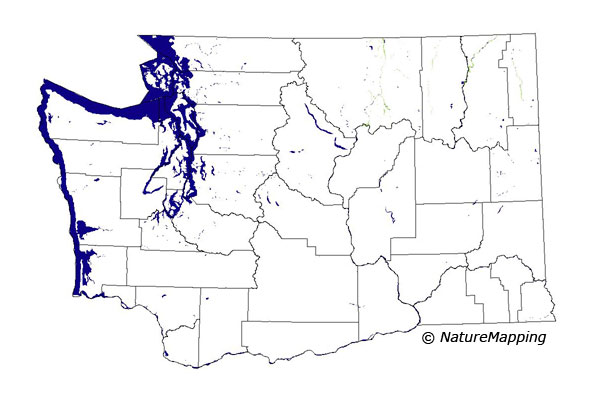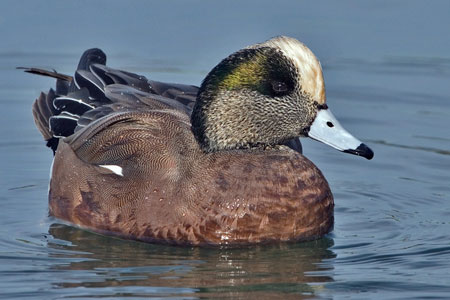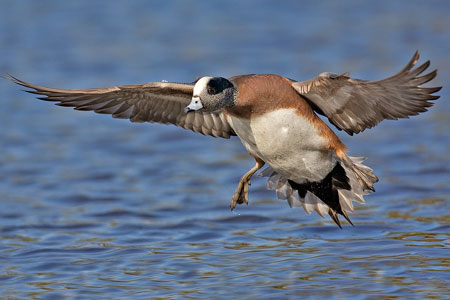

|
American Wigeon (Anas americana) 
Description: The American Wigeon's small bill and the male's white forehead, as well as certain aspects of nesting and feeding behavior, distinguish this species from other dabbling ducks. The male is brightly patterned with white flanks and white crown stripe; while the female is dull gray and rusty brown. The male has a broad dark-green patch extending from behind eye to nape (see photo). The thick bill is bluish-gray with black tip.
Calls:
The call is a high squeaky whistle, resembling squeaky toy. The female quacks. 
Range / Habitat: The American Wigeon breeds in northwestern North America and is found throughout the rest of the continent in migration and in winter. More common in the northern portions of the Washington range, and rare to absent in southeastern Washington and the Palouse. Habitat is shallow freshwater wetlands, including ponds, marshes, and rivers. Click the range map to learn more about the distribution of American Wigeons in Washington. Diet: Their diet includes aquatic plants, with some insects and mollusks eaten during the breeding season. Nesting: Nest is a hollow lined with down and grass. The nest is concealed in tall weeds or grasses often far from water. The female lays 6-12 cream colored eggs and incubates them for about 25 days. Young are downy, leave the nest soon after hatching and fly at 7-8 weeks. 
Behavior: The American Wigeon is often found feeding with diving ducks such as the Redhead, Scaup, and Canvasback, who are adept at rooting up vegetation from deep in the water. The American Wigeon often feeds by snatching these underwater greens away from the diving ducks as they surface. Migration: American Wigeons have a preference for northern nesting areas, so their migration is more prolonged than the migration of ducks that breed farther south. Wigeons will start moving south early in September, and the majority of the population that nest in Alaska will follow the Pacific Coast to the Puget Sound. Some will winter there while others will continue on to the Columbia and Klamath basins as well as into California's Central Valley.
Did you know?
Animal silhouettes available to purchase »
Photos: Natures Pics Photos: American Wigeon photo gallery Videos: American Wigeon videos More Information: American Wigeon - All About BirdsHome | About Us | How to Participate | Biodiversity Modules | Projects | Maps | News | Resources |